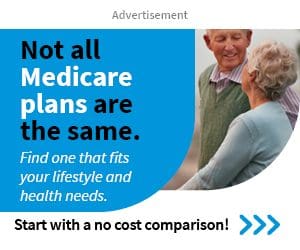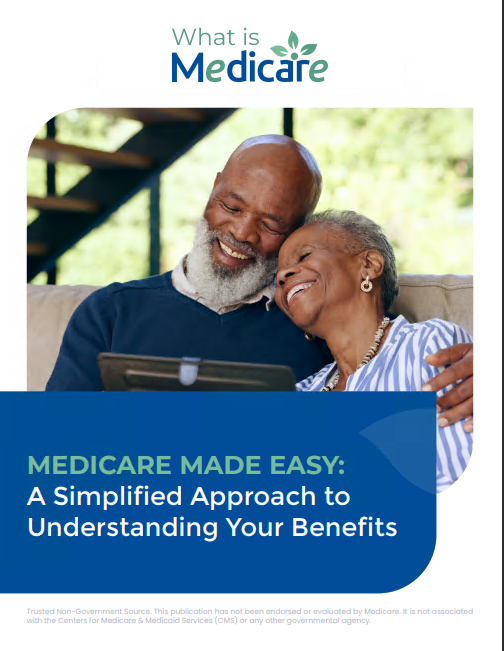Key Takeaways
- Understanding Medicare costs can help you plan effectively for premiums and out-of-pocket expenses, ensuring you avoid unexpected financial burdens.
- Budgeting for Medicare involves considering both predictable premiums and variable out-of-pocket costs like copayments, coinsurance, and deductibles.
Understanding Medicare Costs: How to Budget for Premiums and Out-of-Pocket Expenses
Navigating the world of Medicare can be daunting, especially when it comes to understanding the various costs involved. Many people are surprised to learn that Medicare isn’t entirely free, and budgeting for both premiums and out-of-pocket expenses is crucial for managing healthcare costs effectively in retirement. This article will break down the costs associated with Medicare and offer practical tips on how to budget for them, ensuring you can enjoy your golden years without financial stress.
Breaking Down Medicare Costs
Medicare costs can be divided into two main categories: premiums and out-of-pocket expenses. Each part of Medicare—Part A, Part B, Part C, and Part D—has its own cost structure, which we’ll explore below.
Medicare Part A (Hospital Insurance)
Medicare Part A primarily covers inpatient hospital care, skilled nursing facility care, hospice care, and some home health care services. For most beneficiaries, Medicare Part A is premium-free if they or their spouse paid Medicare taxes for at least ten years. However, if you didn’t meet this requirement, you’ll have to pay a premium, which can be as high as $558 per month in 2024.
Even with premium-free Part A, there are still out-of-pocket expenses to consider. These include:
- Deductibles: The 2024 deductible for inpatient hospital stays under Part A is $1,632 per benefit period.
- Coinsurance: After the deductible, you’ll be responsible for coinsurance costs if your hospital stay exceeds 60 days. For example, in 2024, you would pay $408 per day for days 61-90 in the hospital.
Medicare Part B (Medical Insurance)
Medicare Part B covers outpatient care, preventive services, ambulance services, and durable medical equipment. Unlike Part A, everyone pays a premium for Part B. The standard premium for 2024 is $174.70 per month, but it can be higher depending on your income.
In addition to the premium, there are other costs associated with Part B:
- Annual Deductible: In 2024, the annual deductible for Part B is $240. After meeting the deductible, you’re typically responsible for 20% of the Medicare-approved amount for most doctor services.
- Coinsurance: After the deductible, you usually pay 20% of the cost of covered services.
Medicare Part C (Medicare Advantage)
Medicare Advantage plans, also known as Part C, are an alternative to Original Medicare (Part A and Part B) offered by private insurance companies. These plans often include additional benefits, such as dental, vision, and hearing coverage, and may also incorporate prescription drug coverage (Part D).
Costs for Medicare Advantage plans vary widely depending on the plan you choose. They typically include:
- Monthly Premiums: Many Medicare Advantage plans have a separate monthly premium, in addition to the Part B premium.
- Out-of-Pocket Costs: These can include copayments, coinsurance, and deductibles, which vary by plan.
It’s essential to review each plan’s details carefully to understand what you’ll be paying.
Medicare Part D (Prescription Drug Coverage)
Medicare Part D helps cover the cost of prescription drugs. Part D plans are offered by private insurance companies, and costs can vary based on the plan you select and the prescriptions you need.
Key costs include:
- Monthly Premiums: These can range from $12 to $80 or more, depending on the plan and your income.
- Deductibles: Some Part D plans have an annual deductible, which can be as high as $545 in 2024.
- Copayments/Coinsurance: You’ll typically pay a share of the cost for each prescription, either as a copayment or coinsurance.
Out-of-Pocket Maximums
One of the benefits of enrolling in a Medicare Advantage plan is that these plans are required to have a maximum out-of-pocket limit for covered services. In 2024, this limit can be no more than $8,850 for in-network services. After reaching this limit, the plan pays 100% of covered services for the rest of the year.
Original Medicare (Parts A and B) does not have an out-of-pocket maximum, which means your expenses can be higher if you have significant healthcare needs.
Budgeting for Medicare Costs
Now that you understand the various costs associated with Medicare, let’s explore how to budget for these expenses effectively.
Estimate Your Monthly Premiums
The first step in budgeting for Medicare is to calculate your monthly premium costs. This includes premiums for Part B (which most beneficiaries pay) and any additional premiums for Part A (if applicable), Part C (if you choose a Medicare Advantage plan), and Part D (for prescription drug coverage).
To get an accurate estimate, consider your current income, as this may affect your Part B and Part D premiums. Higher-income beneficiaries pay more for these premiums under the Income-Related Monthly Adjustment Amount (IRMAA).
Plan for Deductibles and Coinsurance
Deductibles and coinsurance are less predictable than premiums, but they are still important to consider in your budget. To prepare, review your medical history and anticipate your healthcare needs for the upcoming year. If you expect to use healthcare services frequently, it’s wise to set aside extra funds to cover these costs.
One approach is to create a healthcare savings fund specifically for covering deductibles and coinsurance. This fund can be built over time, making it easier to manage unexpected medical expenses when they arise.
Consider a Medigap Policy
For those enrolled in Original Medicare, a Medigap (Medicare Supplement Insurance) policy can help cover some of the out-of-pocket costs that Medicare Parts A and B don’t cover, such as copayments, coinsurance, and deductibles.
Medigap policies require an additional monthly premium, but they can provide peace of mind by limiting your out-of-pocket exposure. When considering a Medigap policy, be sure to compare the different plans available to find one that fits your needs and budget.
Factor in Prescription Drug Costs
If you take prescription medications, it’s essential to budget for the cost of a Part D plan and any associated out-of-pocket costs like deductibles, copayments, and coinsurance.
To minimize these costs, consider using generic medications when possible, and review your Part D plan’s formulary each year to ensure it covers your prescriptions. You might also explore pharmaceutical assistance programs that could help reduce your drug costs.
Evaluate Your Medicare Advantage Plan Annually
Medicare Advantage plans can change their premiums, cost-sharing structures, and covered benefits each year. Therefore, it’s important to review your plan annually during the Medicare Open Enrollment Period (October 15 to December 7). If your current plan no longer meets your needs or has become too expensive, consider switching to a different plan or returning to Original Medicare with a Medigap policy.
Understand the Late Enrollment Penalties
Failing to enroll in Medicare on time can lead to significant financial penalties. For example, if you don’t sign up for Part B when you’re first eligible, your monthly premium may increase by 10% for each 12-month period you could have had Part B but didn’t sign up. Similarly, if you delay enrolling in Part D, you may face a late enrollment penalty that increases your premium for as long as you have Part D coverage.
To avoid these penalties, be sure to enroll in Medicare when you’re first eligible, unless you have other creditable coverage.
Utilize Medicare Savings Programs
For beneficiaries with limited income and resources, Medicare Savings Programs (MSPs) can help pay for some or all of your Medicare premiums, deductibles, coinsurance, and copayments. There are different types of MSPs, and eligibility is based on your income and assets.
If you think you might qualify for an MSP, it’s worth applying to see if you can reduce your Medicare costs significantly.
Review Healthcare Needs Annually
Your healthcare needs can change over time, which means your Medicare costs may also change. It’s a good idea to review your healthcare usage and expenses at least once a year. This review can help you identify any adjustments needed in your budget and make informed decisions about your Medicare coverage.
Final Thoughts on Managing Medicare Costs
Understanding and budgeting for Medicare costs is an essential part of managing your healthcare expenses in retirement. By estimating your premiums, planning for out-of-pocket costs, and considering supplemental coverage options, you can better prepare for the financial aspects of Medicare. Regularly reviewing your coverage and healthcare needs will help you stay on top of your expenses and avoid unexpected surprises. Proper planning today can ensure a more comfortable and secure retirement.
Contact Information:
Email: [email protected]
Phone: 7275557890










